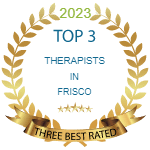What is Trypophobia?
Trypophobia is a fear or disgust of closely-packed holes. People who have it feel queasy when looking at surfaces that have small holes gathered close together. For example, the head of a lotus seed pod or the body of a strawberry could trigger discomfort in someone with this phobia.
The phobia is not officially recognized. Studies on trypophobia are limited, and the research that is available is split on whether or not it should be considered an official condition.
Triggers
Not much is known about trypophobia. But common triggers include things like:
- Lotus seed pods
- Honeycombs
- Strawberries
- Coral
- Aluminum metal foam
- Pomegranates
- Bubbles
- Condensation
- Cantaloupe
- A cluster of eyes
Animals, including, insects, amphibians, mammals, and other creatures that have spotted skin or fur, can also trigger symptoms of trypophobia.
Symptoms
Symptoms are reportedly triggered when a person sees an object with small clusters of holes or shapes that resemble holes.
When seeing a cluster of holes, people with trypophobia react with disgust or fear. Some of the symptoms include:
- goosebumps
- feeling repulsed
- feeling uncomfortable
- Visual discomforts such as eyestrain, distortions, or illusions
- Distress
- Feeling your skin crawl
- Panic attacks
- Sweating
- Nausea
- Body shakes
What Does the Research say?
Researchers don’t agree on whether or not to classify trypophobia as a real phobia. One of the first studies from a trusted Source on trypophobia, published in 2013, suggested that the phobia may be an extension of a biological fear of harmful things. The researchers found that symptoms were triggered by high-contrast colors in a certain graphic arrangement. They argue that people affected by trypophobia were subconsciously associating harmless items, like lotus seed pods, with dangerous animals, such as the blue-ringed octopus.
The American Psychiatric Association’s “Diagnostic and Statistical Manual”(DSM-5), doesn’t recognize trypophobia as an official phobia. More research is needed to understand the full scope of trypophobia and the causes of the condition.
Risk Factors
Not much is known about the risk factors linked to trypophobia. One study from a trusted Source from 2017 found a possible link between trypophobia and major depressive disorder and generalized anxiety disorder (GAD). According to the researchers, people with trypophobia were more likely to also experience major depressive disorder or GAD. Another study published in 2016 also noted a link between social anxiety and trypophobia.
Diagnosis
To diagnosis a phobia, your doctor will ask you a series of questions about your symptoms. They’ll also take your medical, psychiatric, and social history. They may also refer to the DSM-5 to help in their diagnosis. Trypophobia is not a diagnosable condition because the phobia is not officially recognized by medical and mental health associations.
Treatment
There are different ways a phobia can be treated. The most effective form of treatment is exposure therapy. Exposure therapy is a type of psychotherapy that focuses on changing your response to the object or situation causing your fear.
Another common treatment for a phobia is cognitive behavioral therapy (CBT). CBT combines exposure therapy with other techniques to help you manage your anxiety and keep your thoughts from becoming overwhelming.
Other treatment options that can help you manage your phobia include:
- General talk therapy with a counselor or psychiatrist
- Medications such as beta-blockers and sedatives to help reduce anxiety and panic symptoms.
- Relaxation techniques, such as deep breathing and yoga
- Physical activity and exercise to manage anxiety
- Mindful breathing, observation, listening, and other mindful strategies to help cope with stress.
While medications have been tested with other types of anxiety disorders, little is known about their efficacy in trypophobia.
It may also be helpful to:
- Get enough rest
- Eat a healthy, balanced diet
- Avoid caffeine and other substances that can make anxiety worse
- Reach out to friends, family, or a support group to connect with other people managing the same issues.
- Face fearful situations head on as often as possible
Outlook
Trypophobia isn’t an officially recognized phobia. Some researchers have found evidence that it exists in some form and has real symptoms that can impact a person’s everyday life if they’re exposed to triggers.
Speak with your doctor or a counselor if you think you may have trypophobia. They can help you find the root of the fear and manage your symptoms.
Resources: www.healthline.com







